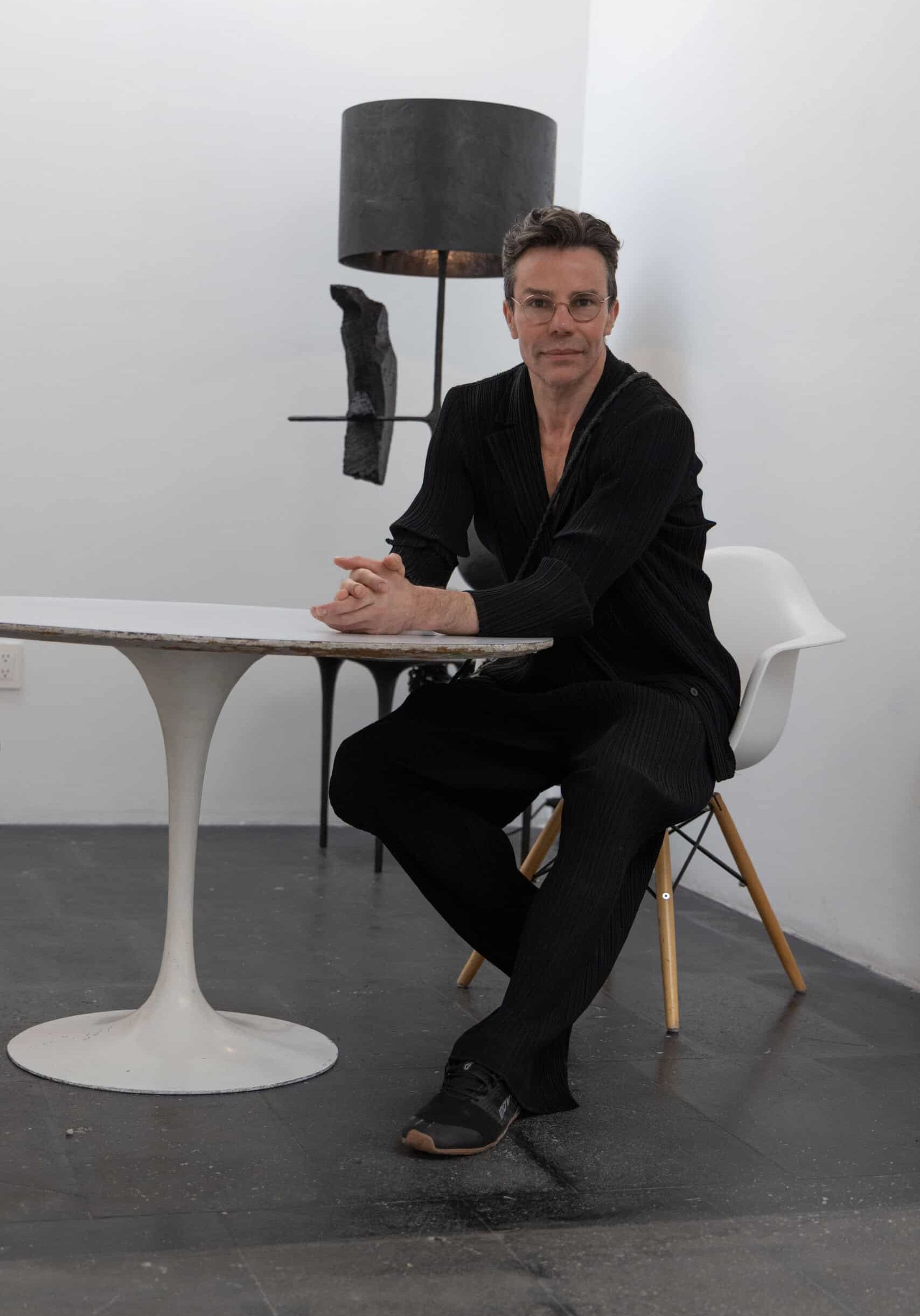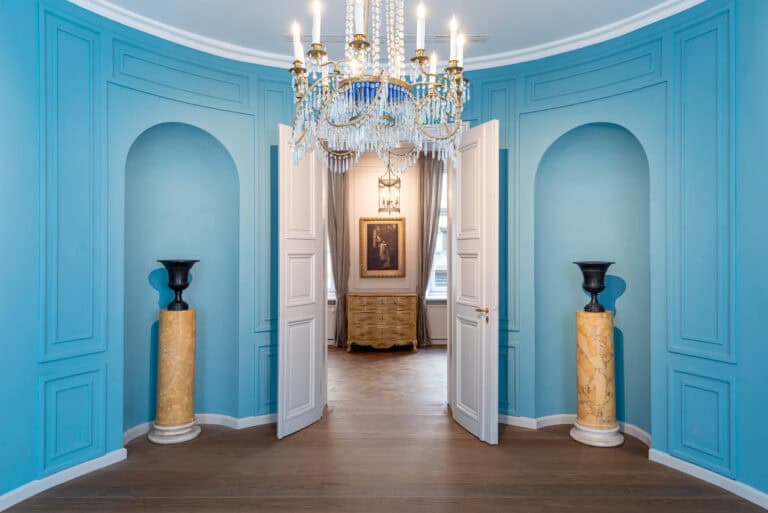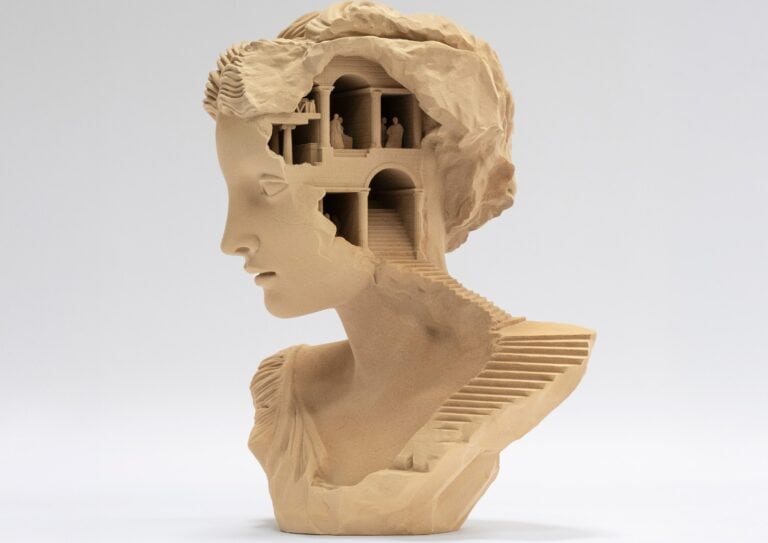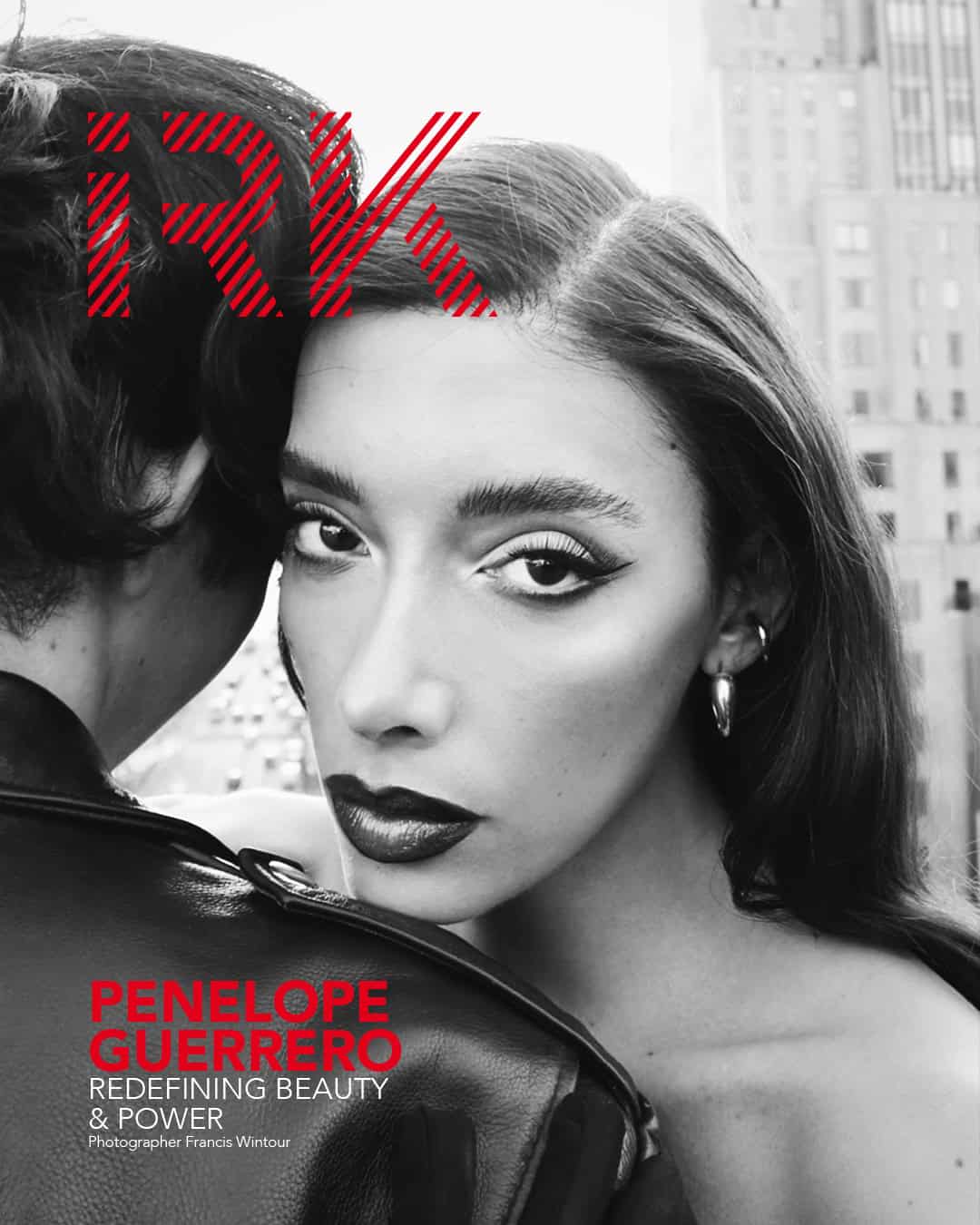
PENÉLOPE GUERRERO DOESN’T NEED PERMISSION
Patrick Duffy
Penélope Guerrero on Identity, Art, and Breaking Ground in Latin America’s Boldest Era.
There are some people you interview and by the end, you realize you weren’t just talking, you were witnessing. Penélope Guerrero is one of those people.
Effortlessly poised, disarmingly funny, and razor-sharp in thought, the Spanish actress, model, and activist has become one of the most vital voices redefining femininity, fame, and freedom across the Latin American entertainment scene. She wears her visibility like couture purposeful, tailored, and with just enough drama to make a point.
But don’t get it twisted. “I’ve never seen my visibility as a burden,” she tells me, tucked into a sunlit corner of her Madrid apartment, sipping tea. “I’m grateful. I didn’t have representation growing up, and I would have loved to see someone like me. So now, being that person for others, it empowers me.”
It’s the kind of line that belongs on a billboard. But in Penélope’s mouth, it lands like a confession: grounded, real, and unapologetically human.
Penélope Guerrero : A Scene Stealer, On and Offscreen
Penélope isn’t interested in being your next token trans character. She’s here to lead the charge—and then rewrite the entire script. Whether she’s bringing depth to roles onscreen, commanding the front row at Paris Fashion Week, or giving the keynote at a human rights forum, she does it with the conviction of someone who’s never waited for permission to speak.
Her career so far? A masterclass in intentional evolution.
“There was a moment, very early on, where I almost walked away,” she admits, eyes flickering. “I had just finished a small TV project, and I was feeling invisible. Like I had to fight twice as hard just to be taken seriously.”
Then came an unexpected moment that changed everything.
“I was at this industry party, totally doubting myself, hiding in the back,” she laughs. “Suddenly, a well-known director—I won’t name him—comes up to me and says, ‘You know, I saw your work. You have it.’ Just like that. No preamble, no flattery. That one sentence pulled me back into myself.”
That comment didn’t just stay with her. It recharged her. “I remember walking out of there and thinking, Okay. I’m not delusional. Let’s keep going.”
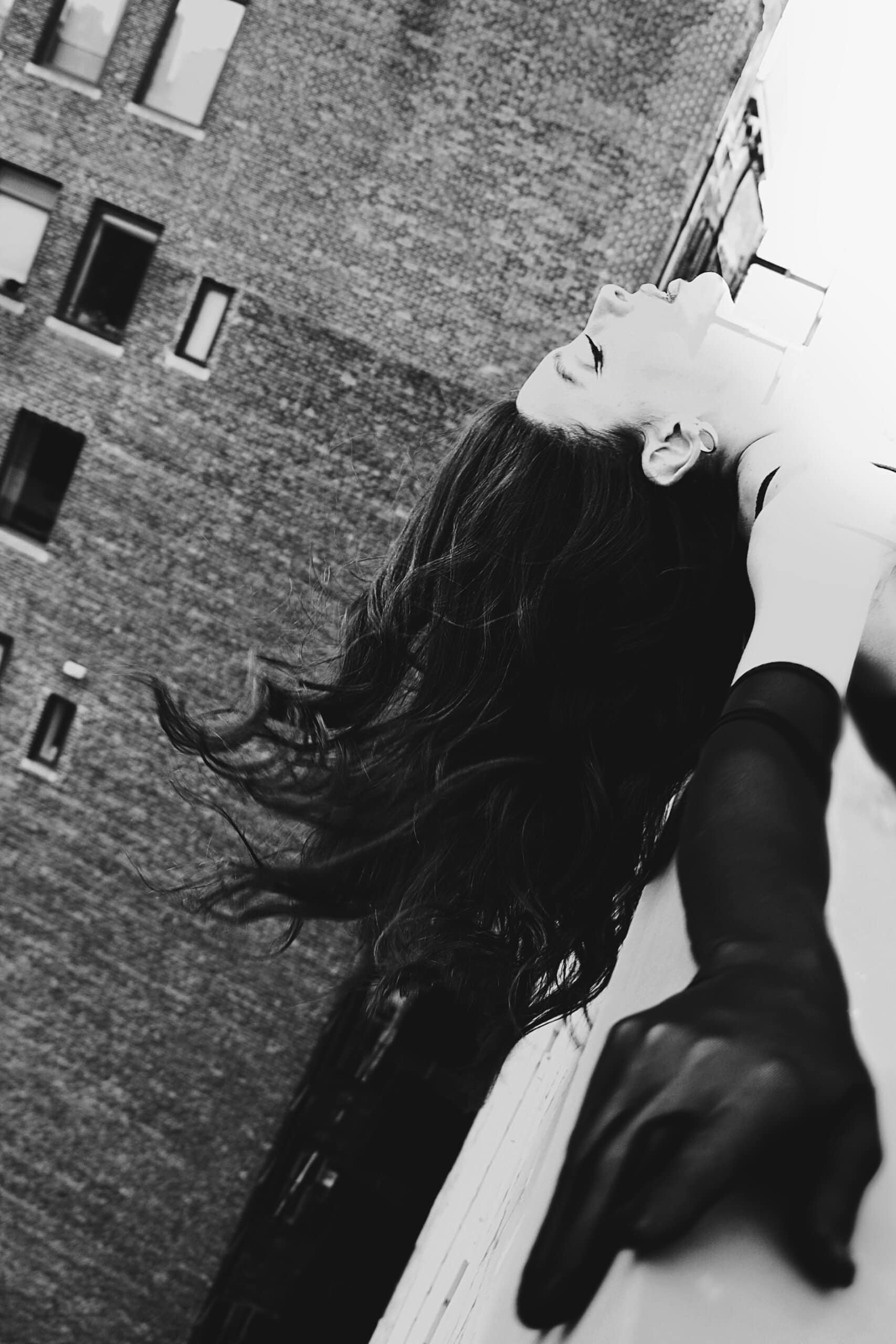
From Zipolite With Love
If her career is a tapestry of transformation, then Mexico is the thread that’s quietly stitching it together. Though born and raised in Spain, Penélope finds a deep sense of belonging—and inspiration—south of the border.
“I’ve only been twice,” she says, “but both times, I carved out a week in Zipolite. Alone. No team, no agenda. Just me, my journal, and an endless supply of micheladas.”
Zipolite, the famously nude-friendly beach town on the Oaxacan coast, offers Penélope something rare: peace.
“I remember lying on the beach, topless, surrounded by gay men who didn’t blink an eye,” she laughs. “That moment of total freedom in my body? It was healing in ways I didn’t expect. There’s no judgment. Just the sun, the sea, and people minding their own business. It’s the kind of liberation that artists dream of.”
And it was in Zipolite, during one of those solo retreats, that she began sketching ideas for what would later become Transmitzvah, her recent film project that blends music, storytelling, and trans identity with surreal flair.
“I would write scenes in the morning and edit them after dinner. No pressure, just intuition. That place brings something out in me.”
Playing the Role of a Lifetime—Herself
One of the more surprising revelations from our conversation is how often Penélope has had to fight for narrative control, not just in her own life, but in the roles she plays.
“I still get offered only trans roles. And while I’m proud to represent, I also want to be seen as an actress, not a symbol.”
She recalls a recent audition where the script called for a stereotypical “tragic trans woman” trope. “It was lazy writing, really outdated. I ended up sitting down with the writers, offering edits. Thankfully, they were open. But it happens more than you’d think.”
This kind of behind-the-scenes advocacy has become part of her creative process.
“I don’t think screenwriters should include trans characters if they aren’t willing to listen and learn. We’re not props. We’re people. Complex, funny, joyful, contradictory people.”
Still, her goal isn’t just to push back, it’s to push forward. “I want to play a villain. A superhero. A mother. A lawyer. Something that has nothing to do with my identity—and everything to do with my talent.”
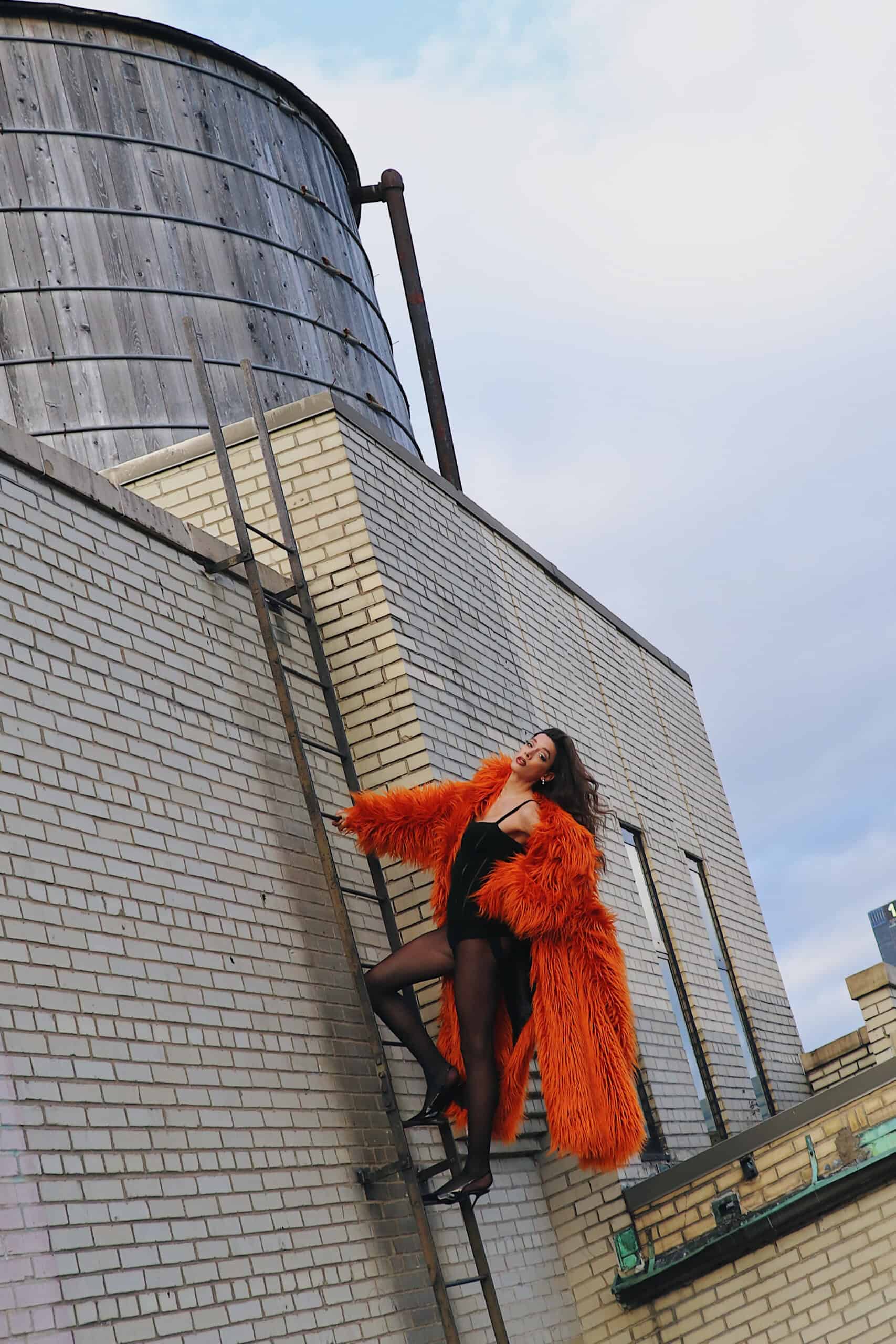
Fashion as Penélope Guerrero’s weapon of choice
Indeed, style has always been a secret language for Penélope. Sometimes sharp, sometimes soft, but always saying something.
“I studied makeup when I was 18,” she says. “And to this day, I do my own face for most shoots and even some films. No one knows my features like I do.”
But her true obsession right now?
“Matières Fécales. I’ve followed them for years, but their debut at Paris Fashion Week? Unreal. They turn fashion into performance art. I got goosebumps watching their show from my phone!”
She leans in, conspiratorially. “And if I could manifest anything in this interview, it’s to become Daniel Roseberry’s next muse at Schiaparelli. The man is creating architecture with emotion. His work feels sacred.”
The Things We Carry
Despite her jet-set life and red carpet polish, Penélope stays grounded with small tokens that carry big meaning.
“There’s this wooden rosary my mother gave me,” she says, reaching for a drawer nearby. “It belonged to my grandmother, and it came from Bethlehem. I take it everywhere, especially on shoots that scare me a little.”
She also wears a delicate necklace with the Virgin of Guadalupe. “I grew up Catholic, but I don’t believe in God. Still, she makes me feel safe. Powerful, even. She’s colorful, radiant, and everywhere in Mexico. I think of her as an icon, not of religion, but of resilience.”
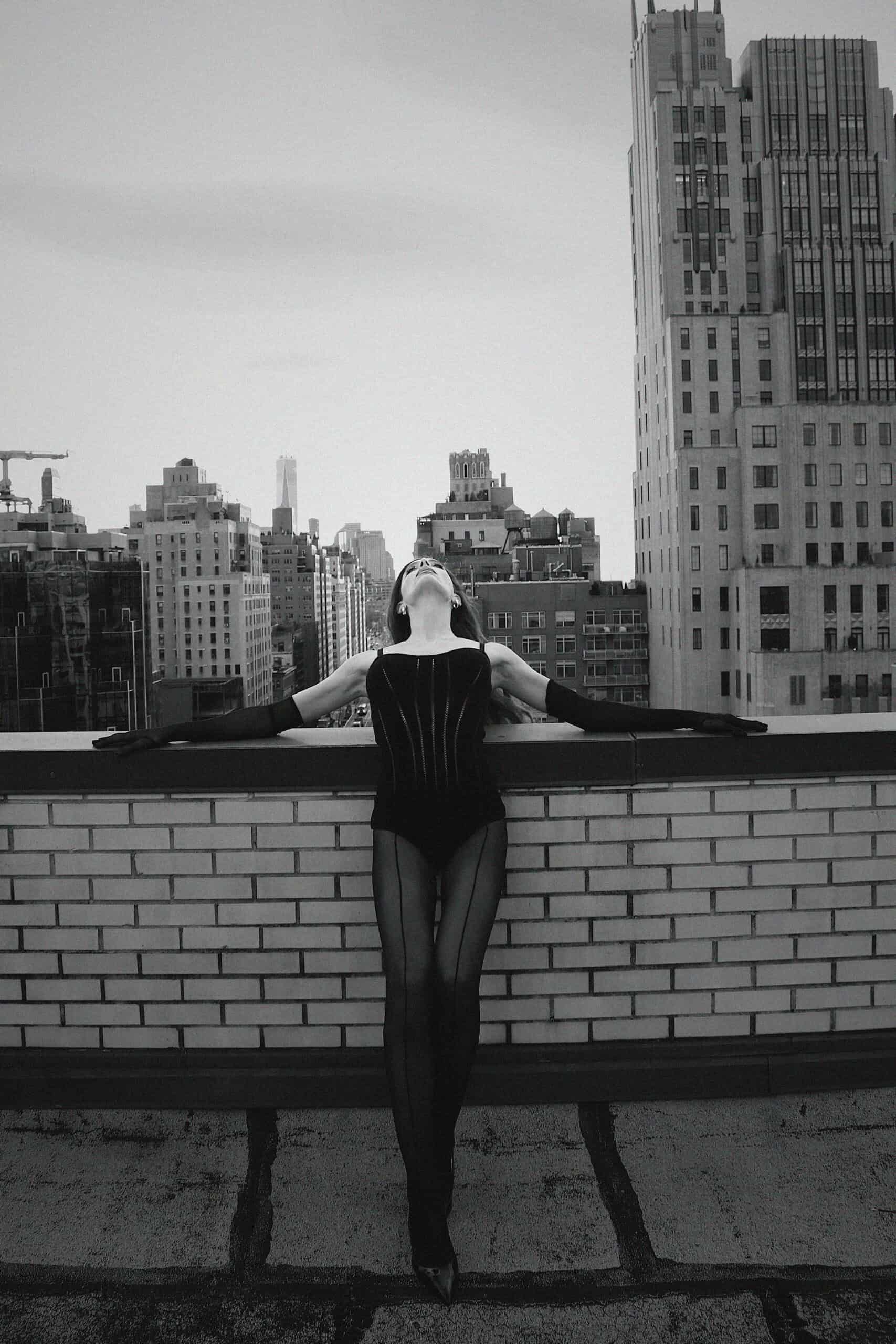
On Stardom and Stillness
Indeed, ask Penélope what success looks like today, and you won’t hear the word award.
“I used to think success meant being seen. Now, it means being able to work. Being trusted to create something new, again and again.”
That shift in mindset came after an especially intense filming schedule where she found herself crying in the makeup trailer, out of exhaustion, not sadness.
“I realized in that moment: This is the dream. The exhaustion, the joy, the pressure, it means I’m alive in my purpose.”
And what’s next? A musical, maybe. A superhero flick. “Or theater,” she adds. “That’s where I first fell in love with acting, performing in school plays. I haven’t been on a stage since, but the itch is real.”
Penélope Guerrero : Latin America’s Creative Awakening
Indeed, Guerrero believes we’re in a golden hour for Latin American talent.
“For so long, global producers ignored us,” she says. “Now they’re realizing the Latin audience isn’t just big, it’s powerful. And we’re not waiting to be discovered anymore. We’re telling our own stories.”
She sees this moment not as a trend, but as a long-overdue correction. “The world is finally tuning in. And we have so much to say.”
Final Cut
Before we hang up, I ask Penélope one last question: what’s one thing she wishes people understood about her?
She thinks for a second.
“That I’m still figuring things out. That being bold doesn’t mean I don’t get scared. But I show up anyway. And I hope that gives someone else permission to do the same.”
In a world obsessed with labels, Penélope Guerrero defies categorization. Actress, activist, icon? Sure. But more than anything, she’s proof that representation isn’t about checking boxes. It’s about breaking them.
And she’s just getting started.

CREDITS
Photos and creative direction by Francis Elias Wintour @franciswintour
Styling by Miles Ehan @milesehan
Make-up by Esteban Marinez @estebanmartinez.makeup
Male model- Micah @micah Geer
Want more ? Take a look of Queerness Where Everyone Gets A Seat At The Table
Share this post
Patrick Duffy is the founder of Global Fashion Exchange, a company catalyzing positive impact through strategic consulting roadmaps focusing on supply chain transparency, worker rights, responsible production for B2B as well as consumer facing programming and community building focusing on aligning people or communities with the SDGs.
Experience developing networks and activating ideas, guiding creative teams globally, and working with institutions like the Victoria and Albert Museum and UNESCO, and iconic spaces such as Federation Square Melbourne, Madison Square Garden, Bryant Park in New York City, and The Dolby Theatre in Los Angeles.
Patrick has produced clothing swaps all over the world from, with GFX Active in over 100 countries. Each GFX event focuses on building community, education and transformational business models. Partnering with global brands, key stakeholders, and academia to help create awareness and positive impact through conscious consumption
Patrick harnesses the power of media to create positive social and environmental impact. Through storytelling, education, and advocacy, he raises awareness, inspires action, to catalyze change. By highlighting issues and solutions, Patrick creates strategic campaigns to engage audiences, influence attitudes and behaviors, and contribute to a more sustainable and just world. Additionally, Patrick is the Sustainability and Positive Impact Director of Paris based @IRKMagazine and Editor In Chief of @IRKLiving
Patrick has produced and co-curated events and marketing/PR campaigns for recognized brands across art, fashion, and tech spaces including @virginhotels @britishfashioncouncil @mspdid @moethennessy @microsoft @lagosfashionweekofficial @perutradenyc @fashionimpactfund @istitutomarangonidubai @peaceboatus @lisboafashionweek and more spanning 15 years and hundreds of events in 5 continents.
Read Next

